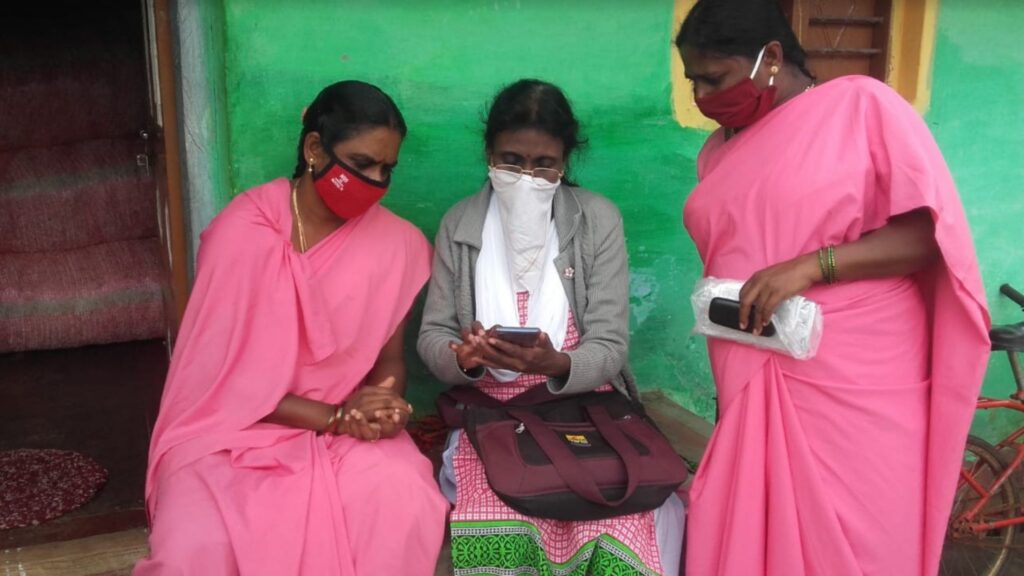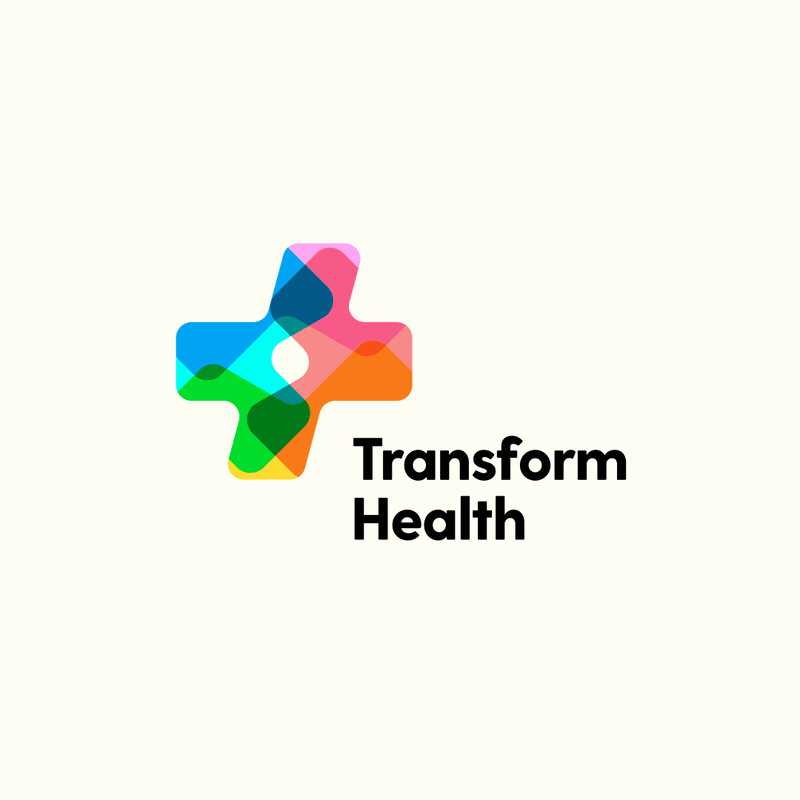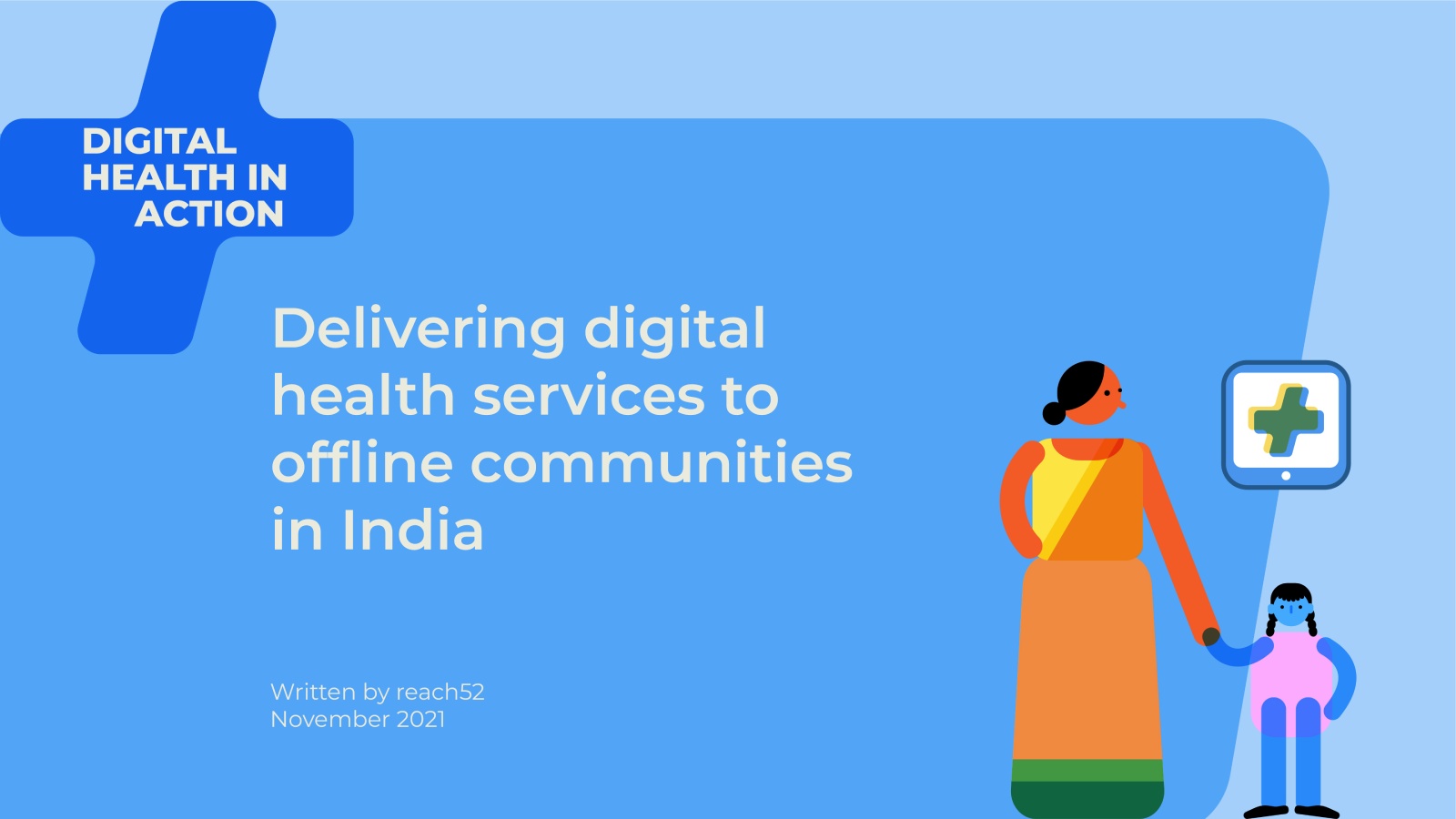Delivering digital health services to offline communities in India
Delivering UHC for a population of approximately 1.4 billion people is a significant task for the Indian government, particularly when the majority of the population use private facilities over public health providers.

The Government of India is committed to accelerating progress on universal health coverage (UHC) through its national UHC initiative Ayushman Bharat. Through Ayushman Bharat, more than 80,000 primary health centres (PHCs) have been transformed into better-resourced health and wellness centres and the national health protection scheme (PM-Jan Arogya Yojana) has expanded to cover over 100 million poor and vulnerable families.In October 2021, the government also announced the Ayushman Bharat Digital Mission to connect the digital health solutions of hospitals across the country and provide every citizen with a digital health ID.
However, to deliver UHC for a country with a population of approximately 1.4 billion people, there remain significant health system gaps and weaknesses to overcome. As recently as 2018, India was ranked 145th amongst 195 countries in terms of the quality and accessibility of health care. The majority of the population (about 66 percent) prefer private facilities over public health providers whilst more than 60 per cent of Indian health care is paid for out-of-pocket, and unexpected illness can mean financial ruin for too many.Digital health has the potential to overcome these barriers to affordable health care in India and across the world. Whilst the COVID-19 pandemic has accelerated the adoption of digital health services, with much fanfare about telehealth, a lot of this growth has been seen in higher income, urban areas. Many digital health solutions don’t work effectively in rural regions with lower incomes, low-to-no internet connectivity and low digital literacy. Digitally-enabled health care innovations from private sector organisations are needed to support and extend government initiatives to reach underserved populations. This is particularly the case in India, where 65 per cent of the population live in rural regions.
reach52 is a tech social enterprise delivering health services in the markets others don’t reach across low- and middle-income countries, currently The Philippines, Cambodia, Indonesia, Kenya and India. Their reach52 access “offline-first” healthtech platform enables a full range of health services in even low-connectivity markets. These platforms equip community health workers and members as networks of agents with offline-mobile apps to manage services, such as collecting data on health care needs, running targeted health education and screening programmes, and e-commerce for essential health products.
In September 2020, reach52 launched its health platform into India, specifically Karnataka where out-of-pocket health expenses comprise a high proportion of household spending and many families are unable to afford the cost of hospital treatments.Through its “growth partner” model and state government collaboration, reach52 engaged with existing community-based organisations operating in target rural districts across Karnataka, including Nucleus Trust, Myrada, and Mkyaps. These partners recruited teams to be reach52 agents (many ASHA workers and +90% women), who are equipped with reach52’s “offline-first” mobile platform to run health services for their communities. The mhealth apps are designed to be ‘offline-first’, so agents can use them to provide health support even in low connectivity regions and sync when back online. They work on basic versions of Android with simple functionality to reflect the lower digital literacy levels of the users.
The first priority was to enrol users onto the reach52 platform, with agents visiting households to sign them up and collect health information on their needs for health services. As of October 2021, over 500,000 users in India had been enrolled onto the reach52 platform across Karnataka and now also Gujarat. Alongside this, reach52 also partnered with Aditya Birla Health Insurance to provide affordable health insurance to low income, rural populations. Through this partnership, residents can purchase a basic (200 INR) or premium plan (325 INR), providing coverage for daily hospitalisation cash, ICU benefits, personal accident health insurance, maternity benefits and Covid-19. These simple, affordable insurance plans provide protection from catastrophic health expenditures, and motivate residents to seek treatment earlier without the fear of financial ruin. The insurance is provided by reach52 agents equipped with the reach52 access e-commerce app, supported by community-based activity such as outdoor advertising, community leader advocacy and events (where Covid-19 regulations permitted). As of October 2021, over 10,000 insurance plans have been purchased by rural residents through the digital health service. reach52 has also been piloting affordable medicines, OTCs and everyday health products through its e-commerce service in partnership with Tata 1mg.
Key to the success of this digital health model is the combination of trusted community-based teams alongside the use of “offline-first” mhealth technology.
reach52 is innovating direct-to-patient channels as well in India to support its on-the-ground access initiatives. During 2020, health chatbot services (including a COVID-19 information and symptom checker and online health check) were provided on a basic version of Facebook Messenger to support harder-to-reach communities during the pandemic. Over 100,000 rural residents used the chatbot services in India and other countries across Southeast Asia and East Africa, demonstrating that health chatbots can be part of the health system solution even in areas with poor internet connectivity. reach52 has now built a WhatsApp health service (providing health education, symptom advice and access to screening and health products), which will be launched in India by the end of 2021. WhatsApp has 64% penetration in India and many rural residents use WhatsApp for around 1 hour per day, so just as reach52 goes to where residents are on the ground with community-based health services, they also going to where they are online to provide continuous health support.
The progress so far of reach52 in rural India demonstrates how “offline-first” digital health platforms, community involvement and new partnerships can be used to accelerate access to health care for low-connectivity populations beyond the reach of traditional public and private sector services. reach52 is expanding into new states (most recently Gujarat) and building new public-private sector partnerships to establish sustainable access to the health education, screening and products that rural populations across India need.
References:
2. https://www.thehindu.com/news/national/pm-modi-launches-ayushman-bharat…
3. https://www.thelancet.com/journals/lancet/article/PIIS0140-6736(18)30994-2/fulltext
4. NSSO health survey 2017-18
5. https://news.harvard.edu/gazette/story/2021/02/whats-the-future-for-healthcare-in-india/
6. https://www.ajpmonline.org/article/S0749-3797(21)00131-8/fulltext#seccesectitle0013
8. https://www.gwi.com/reports/social
For further information, please contact Rich Bryson, reach52, [email protected]


